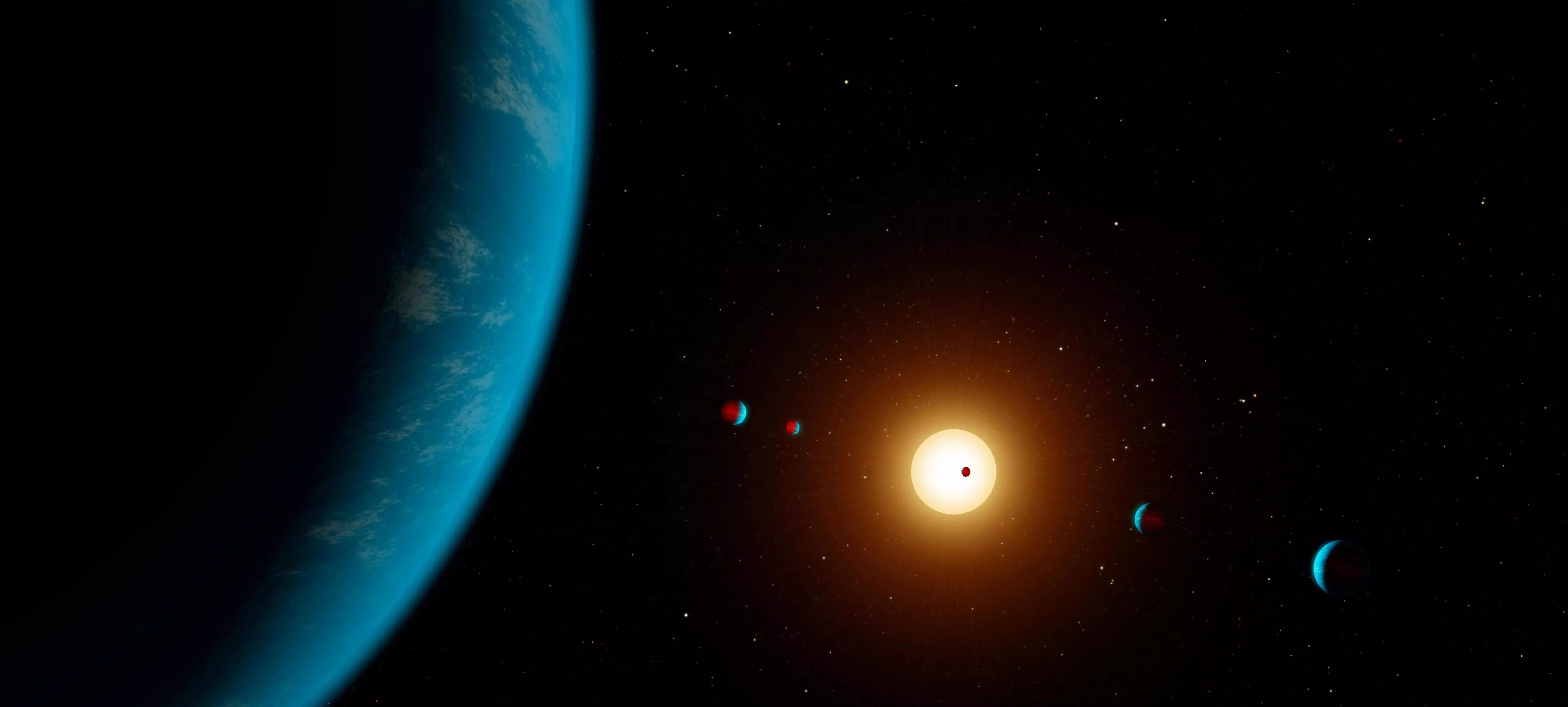
Astronomers discover over 300 unknown exoplanets in Kepler telescope data
text_fieldsThe new algorithm can discover exoplanets in Kepler Space Telescope data more efficiently than human scientists. (Image credit: NASA)
New York: A new artificial intelligence algorithm has discovered 366 new exoplanets in data gathered by a now-defunct exoplanet-hunting telescope.
As per reports, Kepler Space Telescope, NASA's first dedicated exoplanet hunter, has observed hundreds of thousands of stars in the search for potentially habitable worlds outside our solar system.
The findings, described in a paper published in the Astronomical Journal, showed a planetary system that comprises a star and at least two gas giant planets, each roughly the size of Saturn and located unusually close to one another.
The data discovered by an international team of astronomers is significant because it's rare to find gas giants -- like Saturn in the solar system -- as close to their host star as they were in this case.
However, the researchers cannot yet explain why it occurred there, but it makes the finding especially useful because it could help scientists form a more accurate understanding of the parameters for how planets and planetary systems develop.
The lead author Jon Zink, a UCLA postdoctoral scholar remarked that the discovery of each new world provides a unique glimpse into the physics that play a role in planet formation.
The findings could be a significant step toward helping astronomers understand which types of stars are most likely to have planets orbiting them and what that indicates about the building blocks needed for successful planet formation, acoording to the study.
"We need to look at a wide range of stars, not just ones like our sun, to understand that," Zink said.
The term "exoplanets" is used to describe planets outside of the solar system. The number of exoplanets that have been identified by astronomers numbers fewer than 5,000 in all, so the identification of hundreds of new ones is a significant advance.
Kepler's original mission came to an unexpected end in 2013 when a mechanical failure left the spacecraft unable to precisely point at the patch of sky it had been observing for years.
But astronomers repurposed the telescope for a new mission known as K2, whose objective is to identify exoplanets near distant stars. Data from K2 is helping scientists understand how stars' location in the galaxy influences what kind of planets are able to form around them.
























